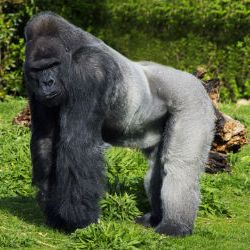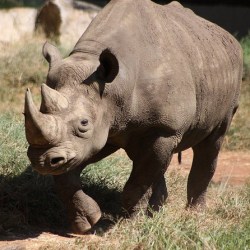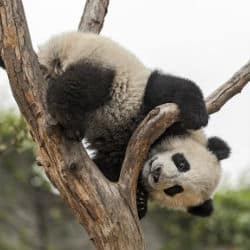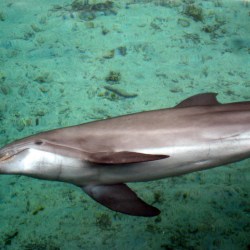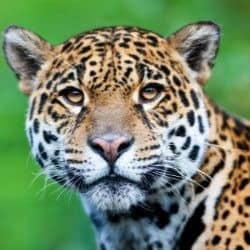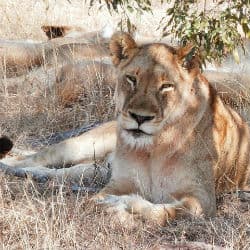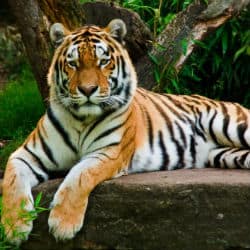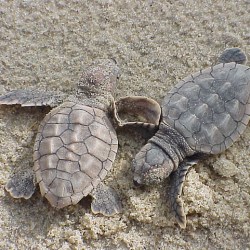News
We bring you the latest from around the World in wildlife and conservation news.
Everything You Need To Know About Mountain Gorillas
The population of wild mountain gorillas is believed to be on the rise making it a true conservation success story. Despite the good news, their numbers still remain low with only 1,000 in the wild making their future fragile. This means the work WWF is doing through the International Gorilla Conservation Programme (IGCP) is as important as ever. Here are five things you should know about this iconic species and why it’s so important that they continue to survive.
Rhino Poaching In South Africa Fell Last Year
There has been some great news coming from South Africa’s Department of Environmental Affairs with official data suggesting that the number of rhinos killed in the country feel from 1,028 in 2017 to 769 last year. At the turn of the twentieth century, more than a half million rhinos roamed throughout Asia and Africa. Unfortunately, the situation is quite different today, with very few rhinos surviving outside reserves and national parks as a consequence of relentless poaching or habitat destruction that has occurred over many decades.
Check Out These Pandas Chilling Out
If you need proof that the panda is the most chilled out species on earth, then look no further than this video. According to news reports news, an eight-year-old girl in China has the fright of a lifetime after falling into a panda enclosure. Fortunately, she escaped unharmed and the pandas did not seem to mind at all they had a young intruder in their enclosure. Apparently, the wall of the enclosure had gaps that small kids could fit through.
Lawsuit Filed To End Practice Of Drive Hunting Dolphins In Taiji
Activists have taken the unprecedented step of filing a lawsuit in an attempt to stop the drive hunting of dolphins in Taiji Wakayama Prefecture made famous in the documentary “The Cove.” Environmentalists are arguing that the practice is both cruel and illegal. Drive hunting is the process of forcing dolphins into a cove by disorienting and panicking them, and then tangling them in nets resulting in their suffocation and drowning.
Rare Footage Of Elusive Black Panther Captured
Most of Kenya’s leopards are characterised by their iconic light coat and dark spots, however there are a tiny fraction of the population that have a rare genetic mutation known as melanism which makes them appear all black in sunlight. San Diego Zoo Global says leopards with melanism have spots that show up at night under infrared imagery. The black leopard has achieved mythical status with lots of stories in central Kenya’s Laikipia County, the location of the most recent sightings.
The Curious Case Of Seafood Hunting Lions
New research suggests that in response to growing scarcity of food resources in an increasingly desert landscape, Namibian lions have taken to hunting seals and seabirds. Namibia has a population of desert lions which can only be found within the Skeleton Coast region. Theses are the only known lions that hunt marine life. They have been seen eating fur seals, cormorants and flamingos. Experts say the discovery suggests that the lions have learned that the key to their survival in unforgiving terrain is adaptability of diet.
Bengal Tigers Mover Higher To Higher Altitudes In Response To Climate Change
Currently the only species of tiger that lives in a predominantly snowy habitat is the Amur tiger following the extinction of the Caspian tiger. However, it would now appear that the Indian Subcontinent’s Bengal tiger will likely be next species to embrace snow largely as a result of climate change. The high-altitude areas of Nepal, India and Bhutan with a combined area of 52,671 square kilometres between them could well end up serving as potential habitats for Bengal tigers according to a recent study.
Plastic Pollution Causing Sea Turtles To Die
Up until a short while ago, it was not obvious whether ocean plastic pollution directly contributed towards the early death of turtles. That has all changed and it has now been confirmed that a sea turtle that has consumed just a single piece of plastic has more than a 20 per cent chance of dying according to the latest research from CSIRO and Atmosphere. The researchers analysed almost 1,000 turtles that had washed ashore dead around the beaches of Australian and found that the more plastic a turtle consumes, the greater the probability that the turtle will die as a result of it.
